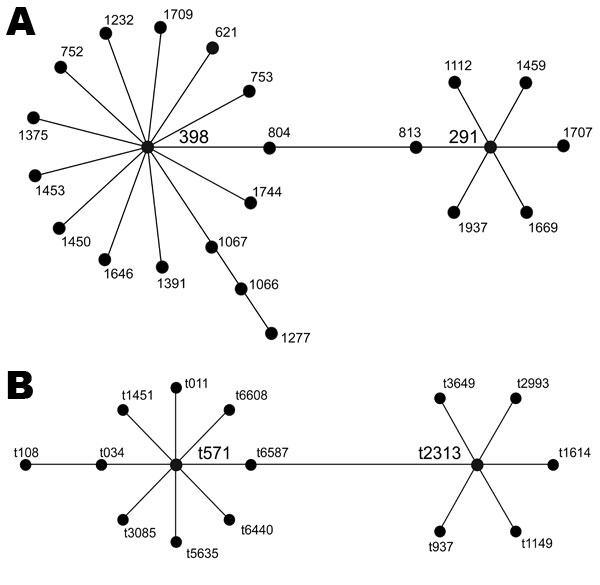Methicillin-Susceptible Staphylococcus aureus ST398, New York and New Jersey, USA
José R. Mediavilla, Liang Chen, Anne-Catrin Uhlemann, Blake M. Hanson, Marnie Rosenthal, Kathryn Stanak, Brian Koll, Bettina C. Fries, Donna Armellino, Mary Ellen Schilling, Don Weiss, Tara C. Smith, Franklin D. Lowy, and Barry N. Kreiswirth

Author affiliations: University of Medicine and Dentistry of New Jersey, Newark, New Jersey, USA (J.R. Mediavilla, L. Chen, B.N. Kreiswirth); Columbia University, New York, New York, USA (A.-C. Uhlemann, F.D. Lowy); University of Iowa, Iowa City, Iowa, USA (B.M. Hanson, T.C. Smith); Jersey Shore University Medical Center, Neptune, New Jersey, USA (M. Rosenthal); Beth Israel Medical Center, New York (K. Stanak, B. Koll); Albert Einstein College of Medicine, Bronx, New York, USA (B.C. Fries); North Shore University Hospital, Manhasset, New York, USA (D. Armellino, M.E. Schilling); New York City Department of Health and Mental Hygiene, New York (D. Weiss)
Main Article
Figure A1

Figure A1. A) Schematic representation of Staphylococcus aureus clonal complex (CC) 398, generated by eBURST version 3 from the S. aureus multilocus sequence typing database (http://saureus.mlst.net) as of September 2011. Subgroup founders sequence type (ST) 398 (3–35–19–2–20–26–39) and ST291 (3–37–19–2–20–26–32) are double locus variants, despite the depiction of intervening STs ST804 (3–35–19–2–20–26–2) and ST813 (3–37–19–2–20–26–2). Subgroup founders are denoted in larger font. B) spa clonal complex (spa-CC) t571, generated by using the integrated BURP (based upon repeat patterns) algorithm in Ridom StaphType software, version 1.5 (www.ridom.de/staphtype). ST398-associated spa types (t034, t571, t1451) and ST291-associated spa types (t937, t1149, t2313, t2993) described in the article cluster separately as in panel A. Subgroup founders are denoted in larger font.
Main Article
Page created: March 16, 2012
Page updated: March 16, 2012
Page reviewed: March 16, 2012
The conclusions, findings, and opinions expressed by authors contributing to this journal do not necessarily reflect the official position of the U.S. Department of Health and Human Services, the Public Health Service, the Centers for Disease Control and Prevention, or the authors' affiliated institutions. Use of trade names is for identification only and does not imply endorsement by any of the groups named above.
